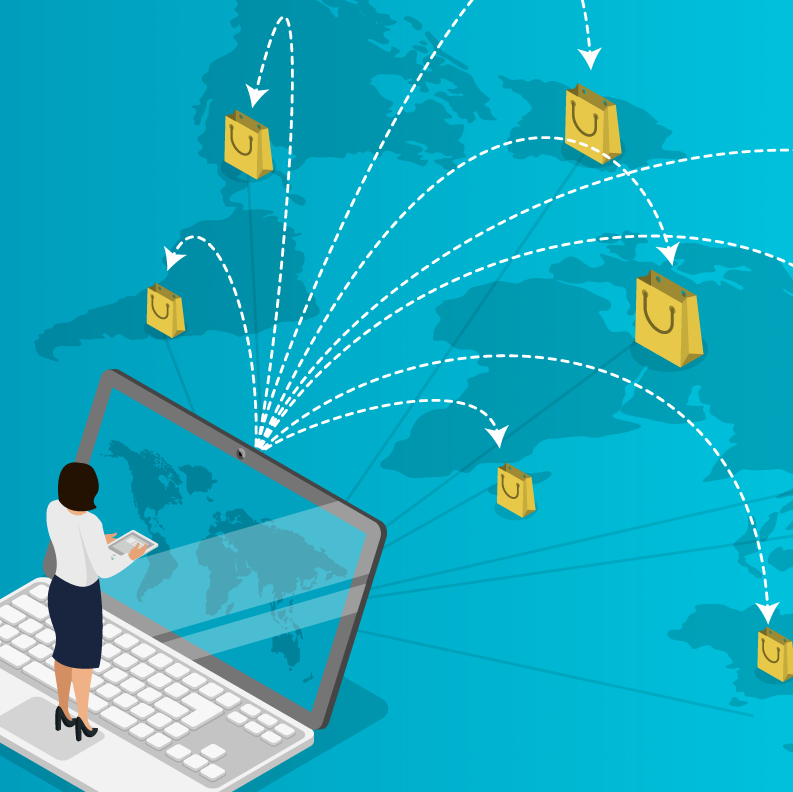Even as a high-volume seller, you always need to find new ways to continue to grow. The online landscape is constantly evolving. While you might think that everything is great now, it doesn’t mean it’ll be the same tomorrow.
See these top finance tips to keep your business growing and establish a healthy bottom line.
Set Your KPIs and Track Them
All sellers need KPIs (key performance indicators) to help them monitor the health of their business. Without KPIs, you can be stuck making decisions based on your gut, personal bias or another distraction that is not based on data.
This can place your business at risk. You could be making a decision without the right information. Or, when a problem occurs, you may not be able to understand what’s contributing to it.
Your KPIs are your most important metrics and can help you quickly identify trends (both positive and negative) so you can make informed decisions at any given moment. You can seize a positive trend to make the most of an opportunity. Or, you can recognize a trend that’s a threat and take corrective action before it’s too late.
What should you track in your KPIs? It depends! Every business is unique and you’ll have to determine the best indicators that align with your operations and goals.
To get you started, you can consider important questions like:
- How much inventory do we need on hand?
- What’s our current cash flow?
- What’s our average order value (AOV)?
- How many sales were from existing customers?
- What’s our cost of goods sold (COGS) percentage?
- What’s our conversion rate on the website?
When it comes to KPIs, identifying and tracking vital data points in your business can lead to more discerning choices in its management. In the words of famous physicist Lord Kelvin, “If you cannot measure it, you cannot improve it.”
Be Self Sustaining
Being a self-sustaining business can mean a few different things. Here, we’re talking about having solid business processes and practices that allow you to achieve sustainable growth.
If you want to bring in new customers AND make sure they stick around, you need to consider how your teams, processes and technology work together to create an end-to-end experience your customers want.
Think about the state of your business right now. Are all parts of it working together in harmony to achieve your goals?
Probably not. Most sellers have room for improvement, especially when it comes to integrating and sharing data among teams. You can probably identify some silos now that are causing issues. Is customer support constantly fielding tickets for orders that are late or wrong? Are customers returning items because they didn’t meet expectations?
Aligning your teams, processes and technology around the same goals (like your KPIs) can be key to maintaining control of your business over the long run. You’ll always be focused on efficiency and meeting customer expectations.
Focus on Existing Customers
While reaching new customers is always important, too often e-commerce businesses overlook the value of what they already have — their existing customers.
Historically, acquiring a new customer can be anywhere from five to 25 times more expensive than retaining an existing one. And, increasing customer retention rates by 5% increases profits by 25% to 95%.
It’s no secret that it’s more competitive (and expensive) to sell online than ever before. When you do bring in a new customer, you want to make sure they stick around. That’s why customer lifetime value (CLV) is an important KPI for online businesses.
To start leveraging your existing customers, here are some different ways to interact with them:
- Ask for referrals and reviews
- Start a loyalty program
- Personalize communication based on their past history with you
- Interact through email marketing and SMS
- Foster communities online
All in all, it’s about making your brand about more than just the products you sell. Consumers want to connect directly with you.
Test and Diversify to Win
The e-commerce landscape is always changing. Every day, there are new brands, products, channels and more. If you want to stay ahead, you have to test and experiment different ways to grow your brand — don’t settle for “we’ve always done it this way.”
Otherwise, you won’t be prepared when something new shows up that threatens to make you irrelevant.
The good news? There’s no shortage of things to experiment with! You can test new product bundles, marketing messaging/delivery and pricing. Or, you can try new sales channels like social, new online marketplaces and more.
However, as you diversify, you don’t want to lose sight of your customer needs. But once you do find something that works, you can double down on it and continue to grow.
Negative Working Capital
The concept of negative working capital is technical but worth understanding for any high-volume online seller.
By definition, negative working capital means that your current liabilities (or what you owe) exceed your current assets (what you have now).
At face value, that might seem like a bad thing — you owe more than you have. But, here’s why that’s not always bad in the case of an online seller.
For example, if you have net 30-day terms with your vendor and you purchase inventory and sell it on a marketplace that pays out twice a month, you can effectively use the capital twice before you have to pay for the inventory.
Now, if you were using a solution like Instant Access through which you are paid every day, you would be able to use that same money every day, creating even more liquidity and cash flow for your business.
For a high-volume seller, negative working capital happens when your business generates cash so quickly (from sales) that you can sell your products to customers before you have to pay your bill to the supplier. In the meantime, you’re technically using the supplier’s money to grow.
Offer More Options for Customers to Pay
In the past few years, there’s been notable enhancements in how consumers can pay online.
Offering these different payment options can help lower cart abandonment and increase sales. It also shows that you’re tuned into what your customers want.
Here are a few of the latest payment options:
- Installment payments: Quadpay, AfterPay, Klarna, Sezzle, Affirm
- Financing options: FinFi, Even, Lightstream
- Alternative payment options: ShopPay by Shopify, Square, PayPal, Google Pay
Self-Funding Your Growth
If you’re trying to keep up a high-growth pace, you might turn to outside funding like loans, venture capital funding or a line of credit to help cover your costs.
However, many sellers don’t realize that new funding options are available that don’t require taking on debt or putting up collateral (like your house) to secure financing.
Instead, you can leverage the health of your business and sales projections to finance your growth. You can use the capital to invest in that next round of inventory and new marketing campaigns or to cover unexpected shipping costs from a high-volume period.
Two alternative financing options include cash advances and real-time payouts.
Cash Advances: A third-party capital provider buys your future receivables (or future sales) at a discount, and gives you a lump sum of cash based on your expected sales. Then, you pay the provider a flat fee based on a percentage of your actual sales.
You can apply for an Instant Advance from Payability and receive an offer based on your future sales on Amazon, Walmart, Shopify, Newegg and other channels. There are no credit checks and you can get approved in just 24 hours.
Find out what the difference is between a loan and a cash or capital advance.
Real-Time Payouts: Based on sales on marketplaces like Amazon, Walmart, Newegg and more, a capital provider gives you an accelerated daily payout. In other words, you’re getting paid your own money faster, which is important when marketplaces like Amazon can hold your earned money for weeks.
You can apply for an accelerated payout program like Payability’s Instant Access. There’s no credit checks and you can be approved in as fast as 24 hours. Payability often offers preferred rates to high-volume businesses with $100,000+/month in sales. Since approval is based on account health and sales performance and not credit, you need to apply and connect the channels you sell on in order to get an offer.
Keep Growing Your Online Business
Many options to continue the growth of your business are available. The right choice for your business comes down to your goals and current operations!



